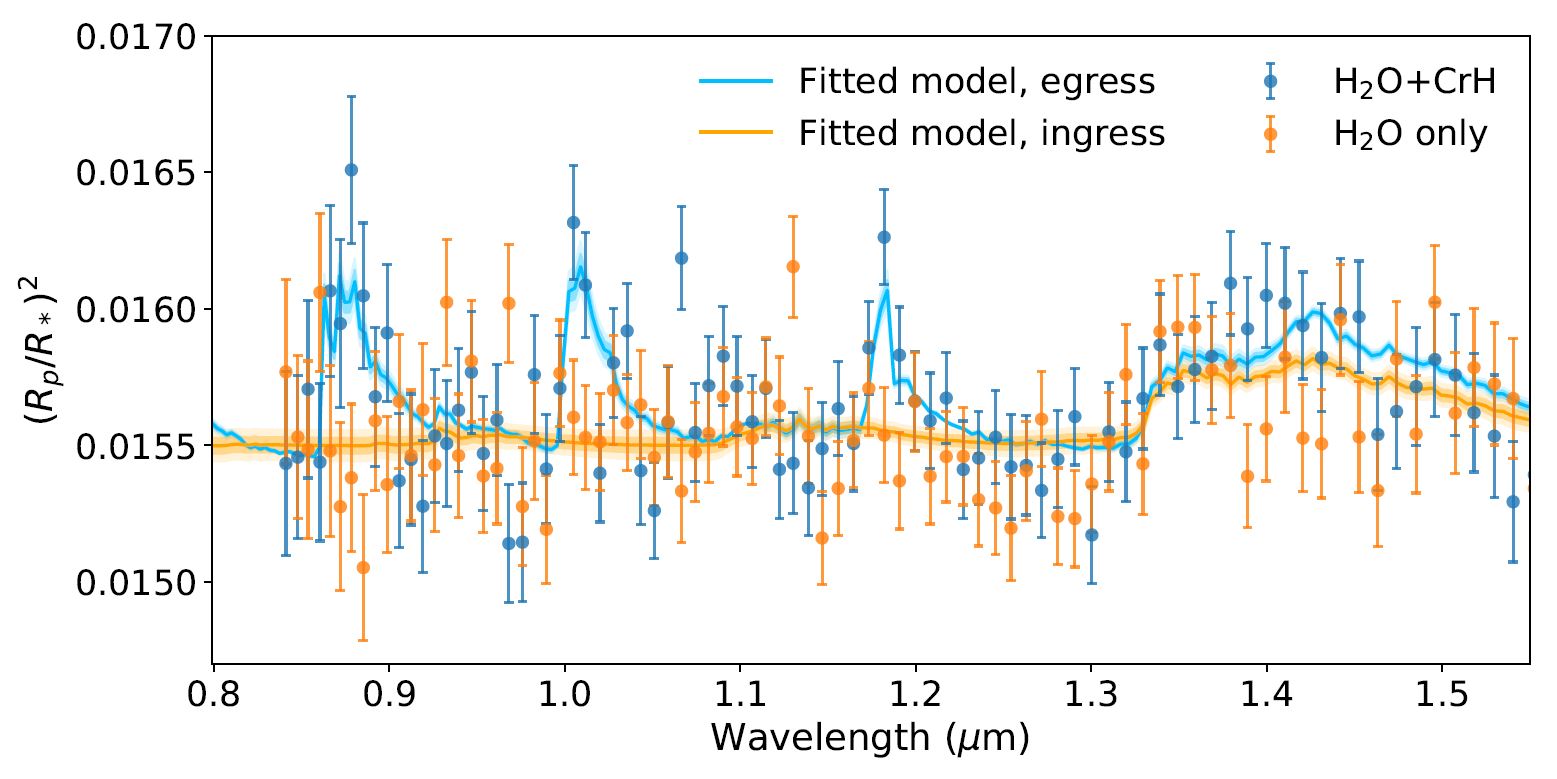The characterisation of exoplanet atmospheres is showing a wide diversity in compositions. So far, chemical detections include H2O, CH4 and CO2, but also exotic metallic compounds such as AlO, TiO and VO. This is no surprise, as hot Jupiters have the appropriate temperatures to host metal compounds in the gaseous phase, and these should be detectable through transmission spectroscopy. Also expected are chromium hydride (CrH) and iron hydride (FeH), the latter already has a few tentative detections and atomic chromium has also been found in hot Jupiter atmospheres.
The hot Jupiter WASP-31 b orbits an F-type star and was discovered by Anderson et al. in 2011. A low density and equilibrium temperature of 1393 K makes it a suitable candidate for atmospheric characterisation and put it in the right temperature range for metal hydrides. Using combined HST and Spitzer data, detections of the signatures of H2O, NH3, K and clouds/hazes have been reported, but disagreement exists between different analyses. Here, we use the TauREx retrieval framework to conduct a reanalysis of the publicly available data to search for the signatures of exotic species.




